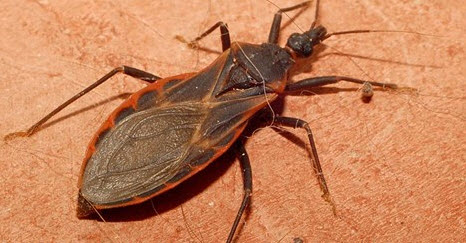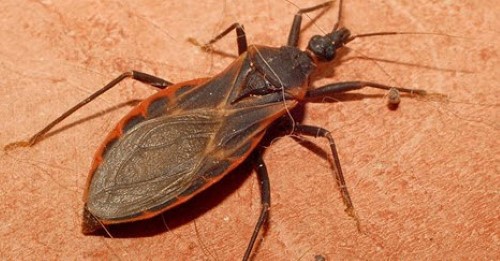All of us want to provide the happiest, healthiest atmosphere for our dogs. That is why it is so important that you know the risks associated with any choices that you may make for your pet. One of those risks is known as the kissing bugs disease, more commonly referred to as Chagas disease.
Chagas was at one time thought to be located primarily in Central and South America but today, it is also found in a number of states inside of the United States. Those states may include Louisiana, Texas, South Carolina, Oklahoma and Virginia. Smaller pockets of Chagas disease may also be located in other areas of the United States as well.

When the parasite enters the canine body, it then enters into the cells. After multiplying, it can rupture and enter into the circulation of the blood to affect numerous organs in the body. The brain and the heart are commonly affected, and it is often associated with sudden inflammation of the heart muscle.
Symptoms and Disease Types
There are two different types of Chagas seen in canines, chronic and acute. In some dogs, they may go through a time when they don’t show any symptoms, and that can last for months or even years. During the time that they are not showing symptoms, the disease can still be progressing and developing as the parasites are multiplying. Eventually, it could lead to inflammation and the degeneration of the heart, ending in heart failure and death.
Acute (usually seen in dogs less than two years of age)
Diarrhea
Depression
Lethargy
Exercise intolerance
Walking difficulties
Rapid body jerks, seizures
Swollen lymph nodes
Increased heart rate (tachycardia)
Congestive heart failure (left and right-sided)
Chronic (usually seen in older dogs)
Weakness
Fainting
Exercise intolerance
Increased heart rate (tachycardia)
Causes
The primary cause of Chagas disease is infection from the T. cruzi parasite. The dog may come in the contact with the parasite in a number of ways, including being bit by a “kissing bug.” If the dog is bitten by an infected bug, the infested feces from the insect remains in the wound. It may also be possible for the dog to contract this disease by eating infected feces, such as those from a raccoon, opossum or armadillo. Blood transfusions can also transmit this parasite.
Diagnosis
If you see any of the signs and symptoms listed above or if you suspect that your dog has a health problem, a veterinarian should be consulted. The veterinarian may ask you for a history of the dog’s health, as well as progression of the symptoms. A physical examination will be given, and a number of tests may also be required, including blood and urine tests.
X-rays may also be required to detect any pulmonary diseases that may be associated with this disease. Any type of chamber or wall abnormalities in the heart can be detected with an endocardiogram.
Treatment
Unfortunately, there is not a cure for Chagas disease, although there are several medications that could have limited benefits. Those medications are only typically beneficial to the animal during the acute stage of the disease. Even with the use of drugs, however, the disease may continue to progress until it is chronic. At that point, supportive treatment of any complications associated with the heart is the primary treatment available.
Lifestyle Management
When a canine has Chagas disease, one of the primary complications is sudden heart problems. If the dog has the chronic form of this disease, the prognosis is less optimistic in most cases. Some veterinarians will recommend euthanizing the dog, although that is a decision that must be made by the dog owner.
Click on a Link Below to Share this Post…

